Search engines consistently drive some of the most valuable traffic to websites. Users who are actively searching for your products or services tend to be highly motivated, meaning they’re often ready to engage or convert. The challenge is figuring out how to capture that search traffic effectively: through Search Engine Optimization (SEO), through Paid Search (Pay-Per-Click, or PPC), or with a combination of both. Each approach has its own strengths.
At Via Marketing, we often recommend a balanced approach that leverages both SEO and PPC. SEO offers sustainable, long-term growth by improving your organic visibility in search results. PPC provides quick, short-term results by placing ads at the top of search engine results pages. Deciding where to focus your efforts (and how to balance the two) requires understanding the key differences between them and how they can complement each other.
In this guide, we’ll compare SEO and paid search side by side. You’ll learn the strengths of each, find out when to prioritize one over the other, and see how an integrated strategy can give you the best of both worlds. We’ll also look at what the future may hold for SEO and PPC, so you can stay ahead of the curve. By the end, you should have a clear idea of how to use SEO and PPC strategically to drive both short-term wins and long-term growth for your business.
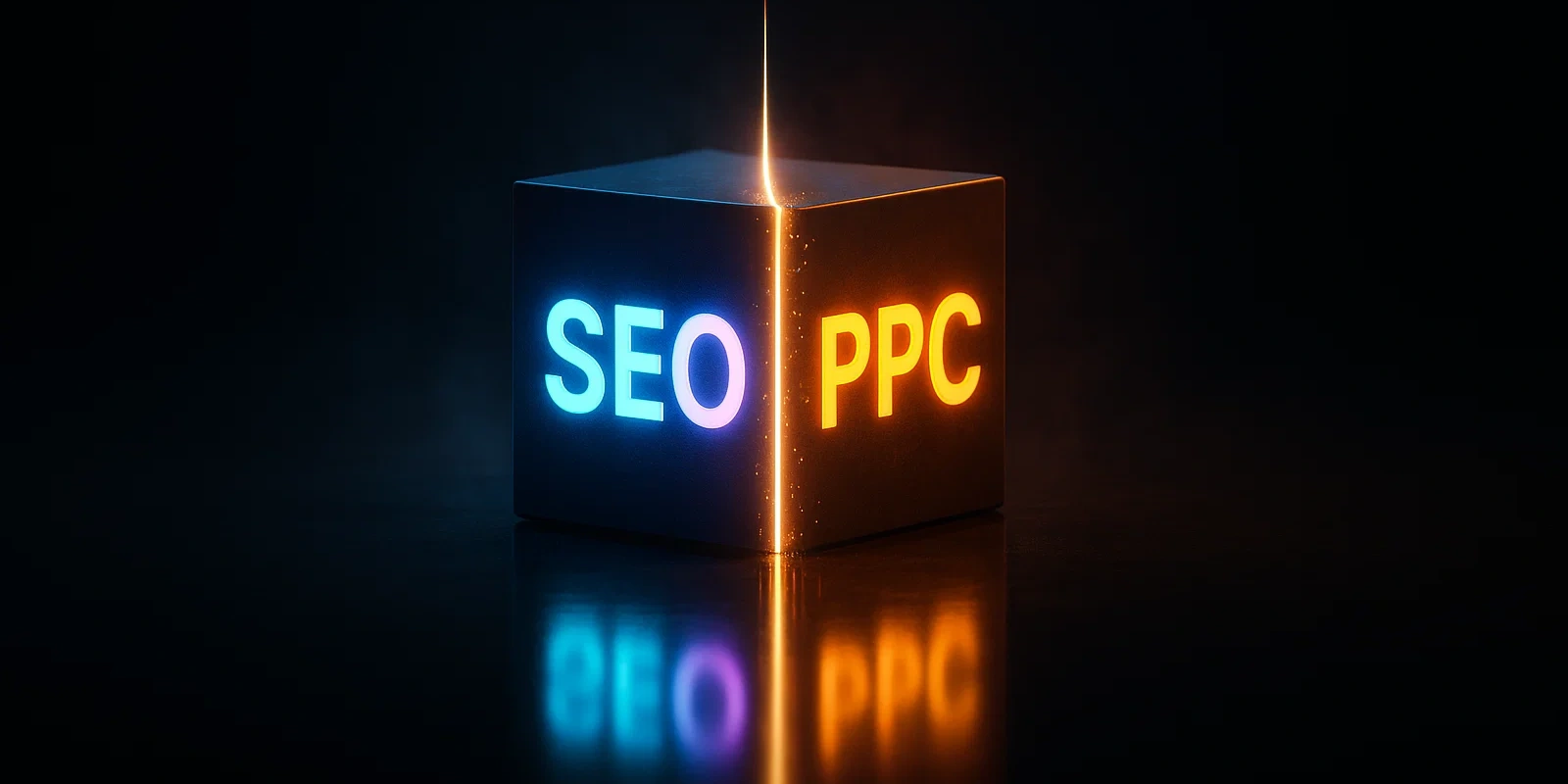
Key Differences Overview
Before diving into details, here is a high-level comparison of SEO and PPC:
- Cost Structure: SEO traffic is “free” in that you don’t pay for each click, but achieving high rankings requires an investment of time and effort (for content, optimization, etc.). PPC operates on a pay-per-click model, meaning you pay each time someone clicks your ad, so there’s a direct ongoing cost for traffic.
- Speed of Results: SEO is a long-term play; it can take weeks or months to see significant results as your site gradually climbs the rankings. PPC delivers immediate results. Once your campaign is live, your ads can start driving traffic that day.
- Longevity of Impact: The benefits of SEO are lasting. If you rank well, you can often sustain traffic with less effort (though some maintenance is needed). Paid search, by contrast, is short-lived. When you stop the ads, the traffic stops. SEO’s impact can compound over time, whereas PPC’s impact is only while you pay.
- Control & Targeting: PPC offers much more control over who sees your message. You can target specific keywords, locations, times, and demographics. With SEO, you can optimize for certain keywords, but you have far less direct control over who finds your site. It’s up to the search engine and user behavior. SEO tends to cast a wider net, while PPC lets you pinpoint audiences.
- Credibility & Click-Through Rates: Generally, organic results earned via SEO are seen as more credible. Many users skip ads and click the organic results first. A top organic listing often gets more clicks than an ad. However, PPC ads are prominently placed and can still attract clicks, especially for users ready to buy. Having strong organic visibility builds your brand’s authority, whereas paid ads can keep you visible for keywords that are hard to rank for.
In-Depth Comparisons
Understanding these differences in detail will help you decide how to allocate your marketing efforts. We’ll examine how SEO and PPC stack up in terms of cost, speed, sustainability, control, user trust, and how easy it is to measure results.
Cost and ROI
SEO: There’s no charge for each click in organic search, but SEO isn’t truly free. It requires investment in content creation, website improvements, and expertise. The upside is that once your pages rank well, you can attract traffic without paying for each visit. This makes SEO very cost-effective over the long term. A strong SEO strategy can deliver an excellent return on investment (ROI) over time because the upfront work keeps generating clicks and leads without ongoing ad spend. The catch is that it takes time and consistent effort before you see those returns, and very competitive keywords might require significant work to rank for (still, you’re investing effort rather than paying per click).
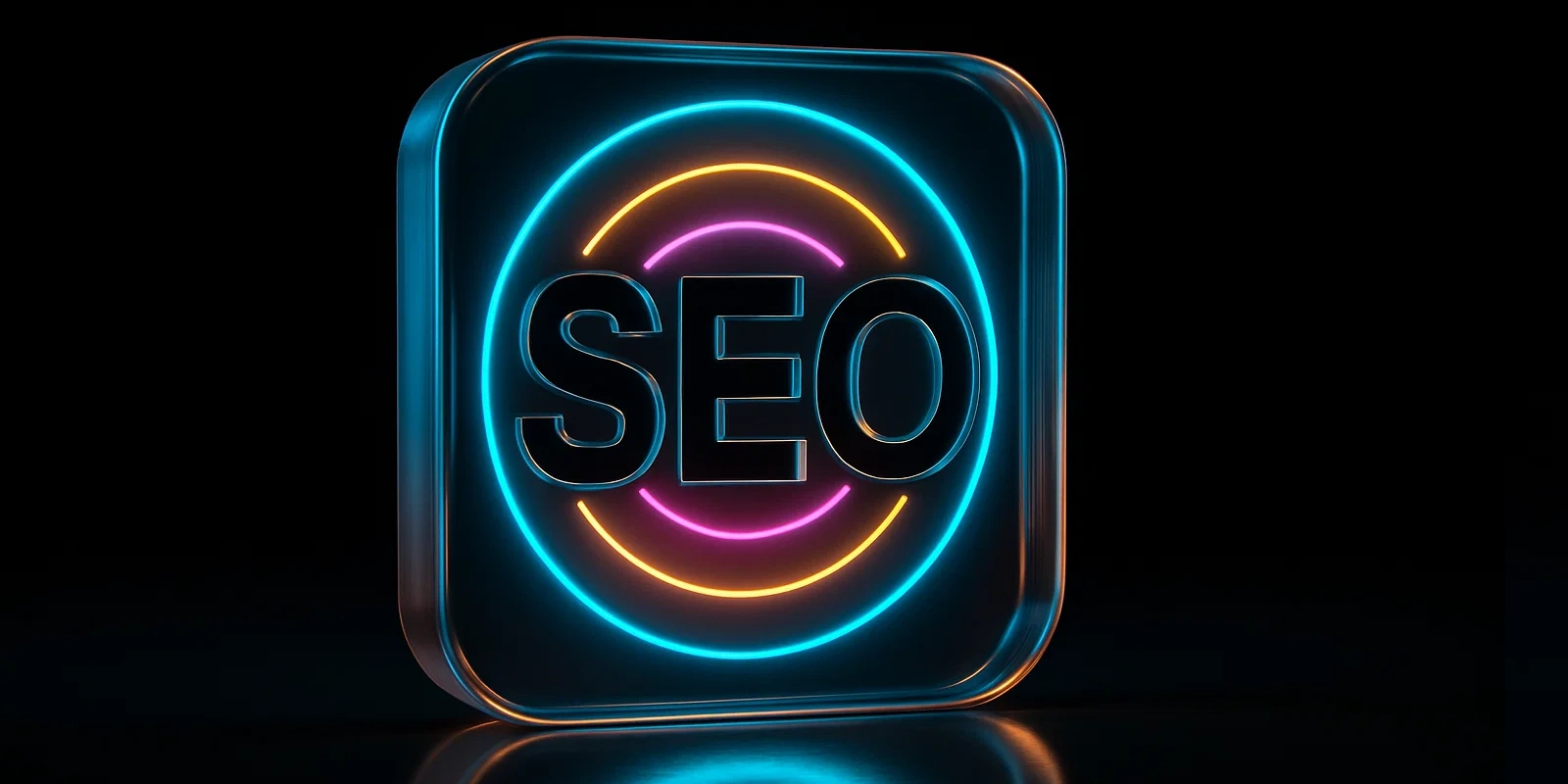
PPC: Paid search has a direct cost for every visitor. You set a budget and bid on keywords, and you’re charged each time someone clicks your ad. In competitive markets, those clicks can be pricey. The advantage is that you can often calculate ROI quickly. For example, if you spend $500 on clicks,, yielding $5,000 in sales, it’s worth it. PPC can provide a profitable ROI in the short term if campaigns are well managed because you’re targeting exactly the terms and audiences that convert. Just keep in mind that the spending is continuous: once you stop paying for ads, the traffic disappears. Over the long run, maintaining a PPC presence will generally cost much more than maintaining an equivalent SEO presence, but it’s the trade-off for immediate results and control.
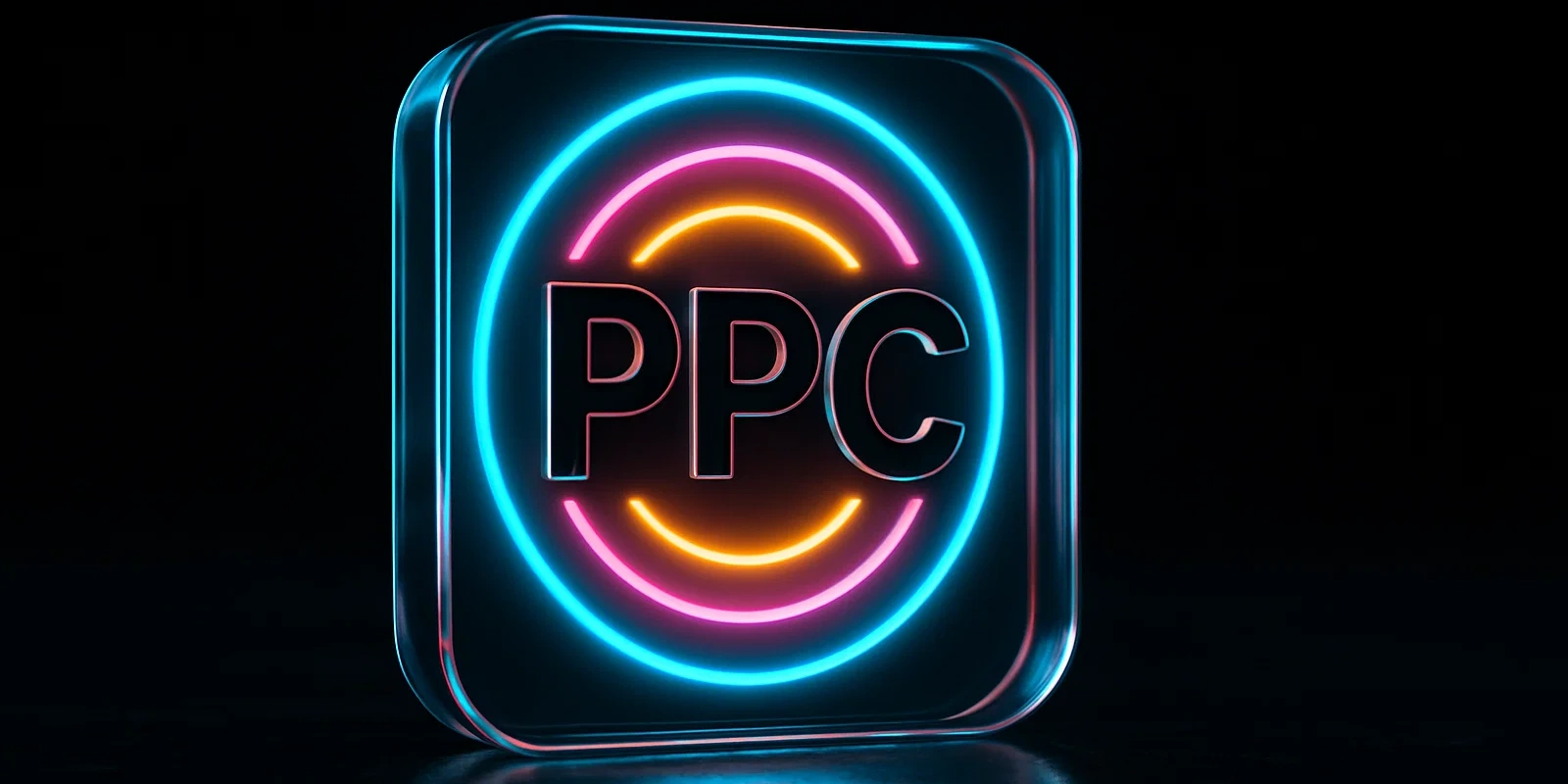
Speed of Results and Longevity
SEO: SEO is a slow burner. It often takes several months to gain significant traction. You might publish a great piece of content today, but it could be weeks (or longer) before it ranks on page one and starts drawing substantial traffic. However, the results of SEO, once achieved, tend to be durable. If you earn a top ranking, you can often keep getting traffic from it long-term as long as you continue to maintain your site. In other words, SEO requires patience up front, but it can pay off continuously once it kicks in.
PPC: PPC is almost instant. The moment your ads go live, you’re eligible to appear in search results and can start getting clicks. This makes PPC ideal for quick wins, like promoting a new product, event, or sale. The flip side is that the visibility is temporary. As soon as you pause or end your campaign, your presence in the search results is gone. There’s no residual traffic after a campaign ends. So, PPC can generate traffic immediately, but it won’t create the kind of lasting momentum that SEO can. It’s excellent for short-term needs and bursts of traffic on demand, but it requires continuous input (budget) to keep it going.
Control and Targeting
SEO: With SEO, you have limited direct control over who sees your content in search results. You can optimize pages for certain keywords, but you can’t dictate exactly who will search those terms or when. In general, SEO casts a wide net. You might attract visitors from all sorts of places and backgrounds if they find your content relevant. This broad reach is great for brand exposure, but if your business serves a specific audience (or region), some of that organic traffic might not be perfectly targeted. For example, a local service provider might attract visitors from outside its service area through organic search users who aren’t likely to convert, whereas with PPC, you could set ads to show only in your target city or region. Also, scaling SEO isn’t instantaneous; you can’t just flip a switch to double your traffic. To reach more people organically, you need to continually produce quality content and improve your site, which takes time and effort. In short, SEO is more of a long-term, big-picture strategy without fine-grained control over who, when, and where in the short term.
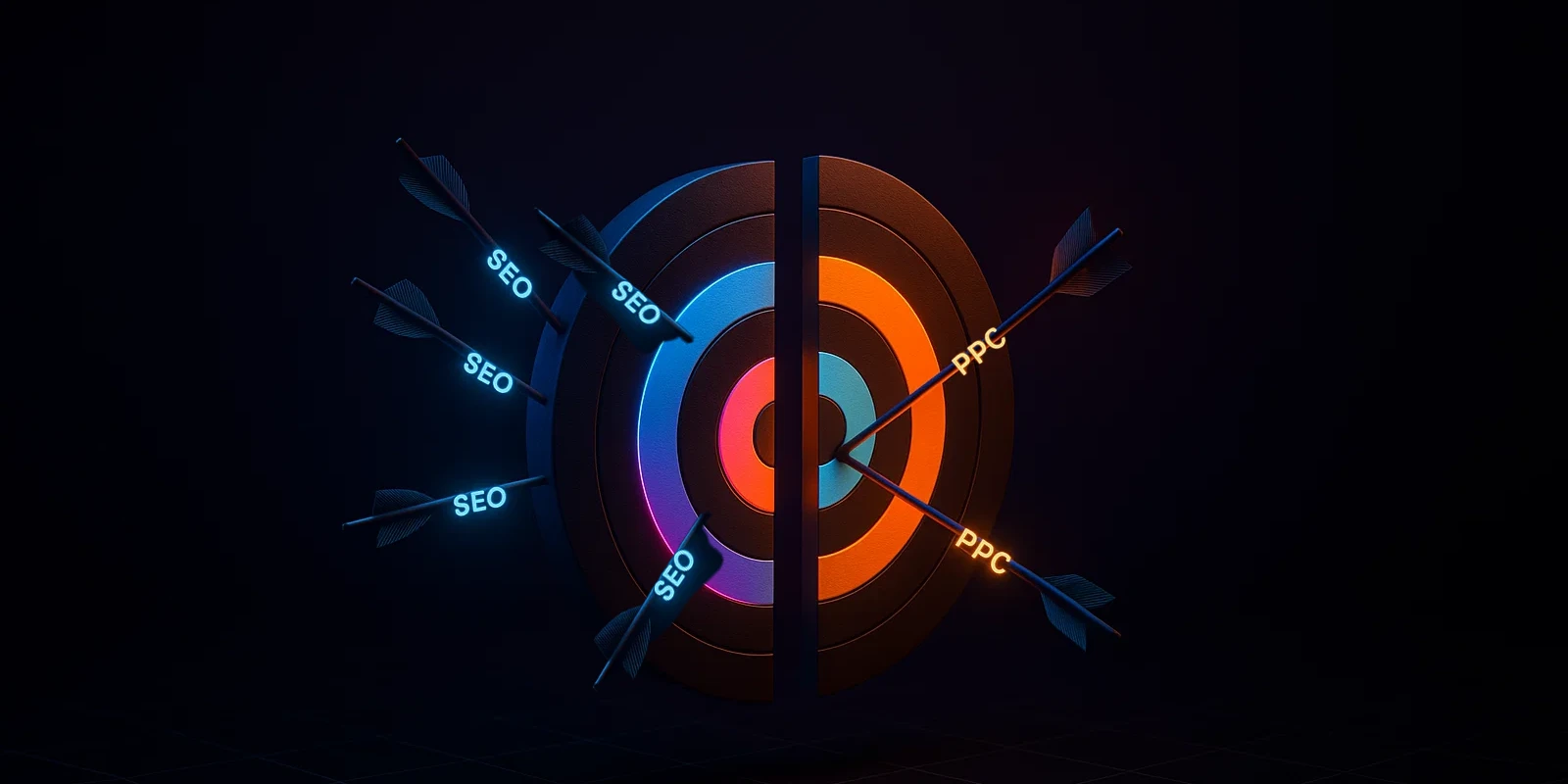
PPC: Paid search lets you target your audience with precision. You choose the keywords for your ads and can refine who sees them by location, time of day, device type, and even user demographics or interests. This means if you only want to reach customers in your city between 9am and 5pm, you can do that with PPC. You’re in full control of your ad budget and placements, and you can increase bids to show up more for important searches or pause campaigns on a slow week. PPC is also highly scalable on demand: if you want more traffic, you can simply invest more (budget permitting) and appear in more searches or higher positions. The trade-off for this control is the need for active management. You’ll need to monitor performance and adjust your campaigns to make sure that money is being spent effectively, but the ability to target exactly who you want to reach is a powerful advantage of PPC.
Trust and User Perception
SEO: High organic rankings often come with a trust advantage. Many users inherently trust the results that Google places at the top of the organic listings because they know those have earned their spot. Being visible in the organic results (especially if your site appears in the top few positions) gives your brand a sense of authority. Users are more likely to click and engage with your site because it doesn’t feel like an ad they sought out. This can lead to better engagement: if your content is helpful, those users may spend more time on your site and develop a positive perception of your brand. In summary, SEO not only drives traffic, it often brings you an audience that’s predisposed to trust what they find.
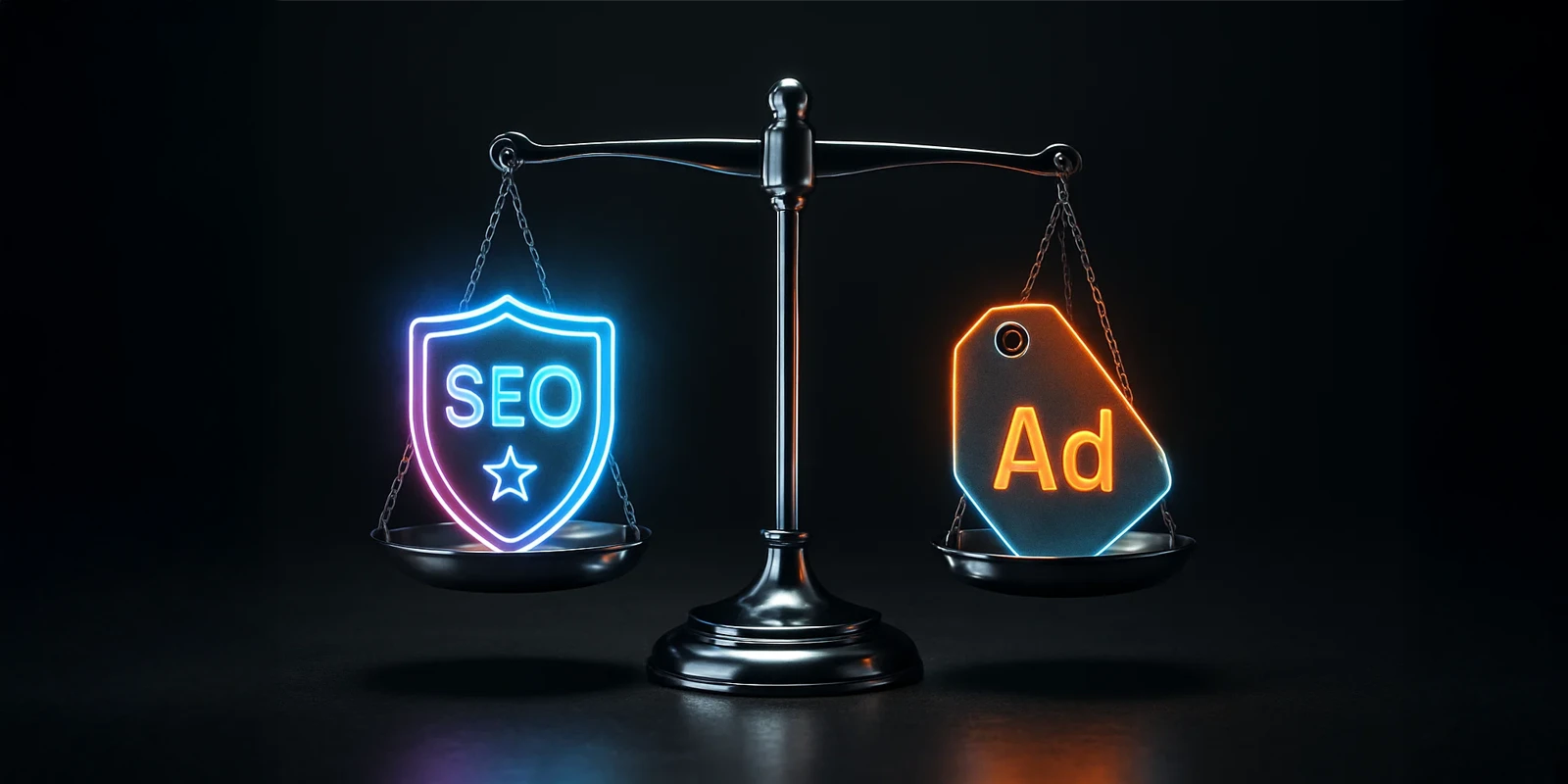
PPC: Paid ads are clearly labeled as advertisements, so a portion of people will scroll right past ads due to “ad blindness” or a deliberate choice to trust organic results more. In fact, the majority of search clicks typically go to organic results overall, reflecting this user preference. However, plenty of users do click on ads, and when they do, they often have strong intent (after all, they clicked a prominent result expecting it to help them). In order to avoid any initial potential speed bumps, your ad needs to be highly relevant to their search, and your landing page needs to deliver what was promised instantly. When done right, a PPC visitor can convert just as well as any other. The first impression is critical if the user feels like they’re getting exactly what they searched for, and the fact that it came via an ad becomes unimportant. In practice, PPC can actually attract very ready-to-buy users, and as long as your ads are honest and useful, you can earn their trust and business quickly.
Measurement and Tracking
SEO: Measuring SEO performance is a longer-term and somewhat indirect process. You’ll track metrics like your search rankings for target keywords, the organic traffic coming to your site, and how users from search behave (e.g., do they convert once on your site?). However, these metrics usually move slowly. It might take a few months to see a noticeable rise in organic traffic after implementing SEO changes. And when you do see improvement, it can be tricky to attribute it to one specific action. Success often comes from the cumulative effect of many optimizations. SEO analytics requires looking at trends over time and understanding that gains are gradual and sometimes influenced by external factors like search engine algorithm updates.
PPC: Measuring PPC is straightforward. From the moment a campaign starts, you get detailed data: impressions (how many people saw your ad), clicks, click-through rate, cost per click, and conversions (if you’re tracking goals like purchases or sign-ups). This transparency means you can quickly gauge what you’re getting for your money. For example, you might see that one ad generated 50 clicks and 5 sales, while another generated 50 clicks and zero sales, enabling you to react and optimize. You can tightly track your return on ad spend because you know the cost and the direct results. This immediate feedback loop is a big advantage of PPC; it allows for continual refinement and helps justify your ad budget with clear numbers.
When to Use SEO vs. PPC
Deciding between SEO and PPC isn’t an all-or-nothing proposition, and most businesses will benefit from using both in tandem. However, depending on your situation, you might lean more on one than the other at a given time. Here are some scenarios outlining when SEO or paid search tends to make the most sense. Ultimately, it’s not about choosing one over the other permanently but understanding when to lean more on SEO or PPC based on your current priorities.
When SEO Is Your Best Bet
If you’re looking for sustainable, long-term growth and can be patient for results, SEO is your best bet. Choose SEO when you have more time than money. In other words, if you’d prefer to invest effort now to reap the rewards down the line rather than pay for instant traffic. This is often the case for growing businesses that want to build their brand’s authority by creating valuable content. Over time, a solid SEO strategy can help you dominate important search terms in your niche and continuously attract highly relevant visitors without ongoing ad costs. In short, go with SEO when you want to build a lasting online presence, need to be mindful of budget, and aim to earn your audience’s trust through organic credibility.
When focusing on SEO, keep these best practices in mind:
- Create high-quality content that addresses your audience’s questions and needs. Content is the fuel for SEO.
- Optimize your pages with relevant keywords and on-page SEO techniques so search engines can clearly understand your content.
- Improve technical factors like site speed, mobile-friendliness, and easy navigation, and create a healthy website structure that helps both users and search rankings.
- Build credibility with backlinks by earning links from other reputable websites, as this signals to search engines that your site is authoritative.
When Paid Search (PPC) Makes Sense
If you need immediate results or have a time-sensitive marketing goal, PPC is the go-to choice. For example, to generate buzz for a new product launch next week or to promote a limited-time offer, paid search will get your message in front of people right away, something SEO can’t do on short notice. This makes PPC an unbeatable option for short-term campaigns or urgent marketing needs.
PPC is also ideal when you want to target a very specific audience or location. With ads, you can zero in on the exact demographics, interests, or regions you want to reach, ensuring your budget is spent on high-intent prospects. Another time to lean on PPC is if your website is new (and not yet ranking well in organic search) or if you’re in an industry where organic results are dominated by big players. Running ads can give you a presence on page one while your SEO efforts ramp up or in scenarios where ranking organically would be difficult. In short, choose PPC when you need quick visibility, precise targeting, or a guaranteed spot in the search results that SEO can’t provide in the short term.
To make the most of PPC, follow these best practices:
- Set a clear budget and bidding strategy so you know how much you’re willing to spend and what goals you’re targeting (e.g., cost per acquisition).
- Craft compelling ad copy that directly speaks to what users are searching for. Highlight your key selling point or offer and include a call-to-action (CTA).
- Optimize your landing pages so that anyone who clicks your ad finds exactly what they were promised. A fast, relevant landing page will improve conversions and your ad quality score.
- Monitor and adjust campaigns continuously. Turn off keywords or ads that aren’t performing well and put more budget into those that are. Keep an eye on metrics like click-through rate and conversion rate, and refine your targeting or bids to maximize your return.
Integrated Strategies: Using SEO and PPC Together
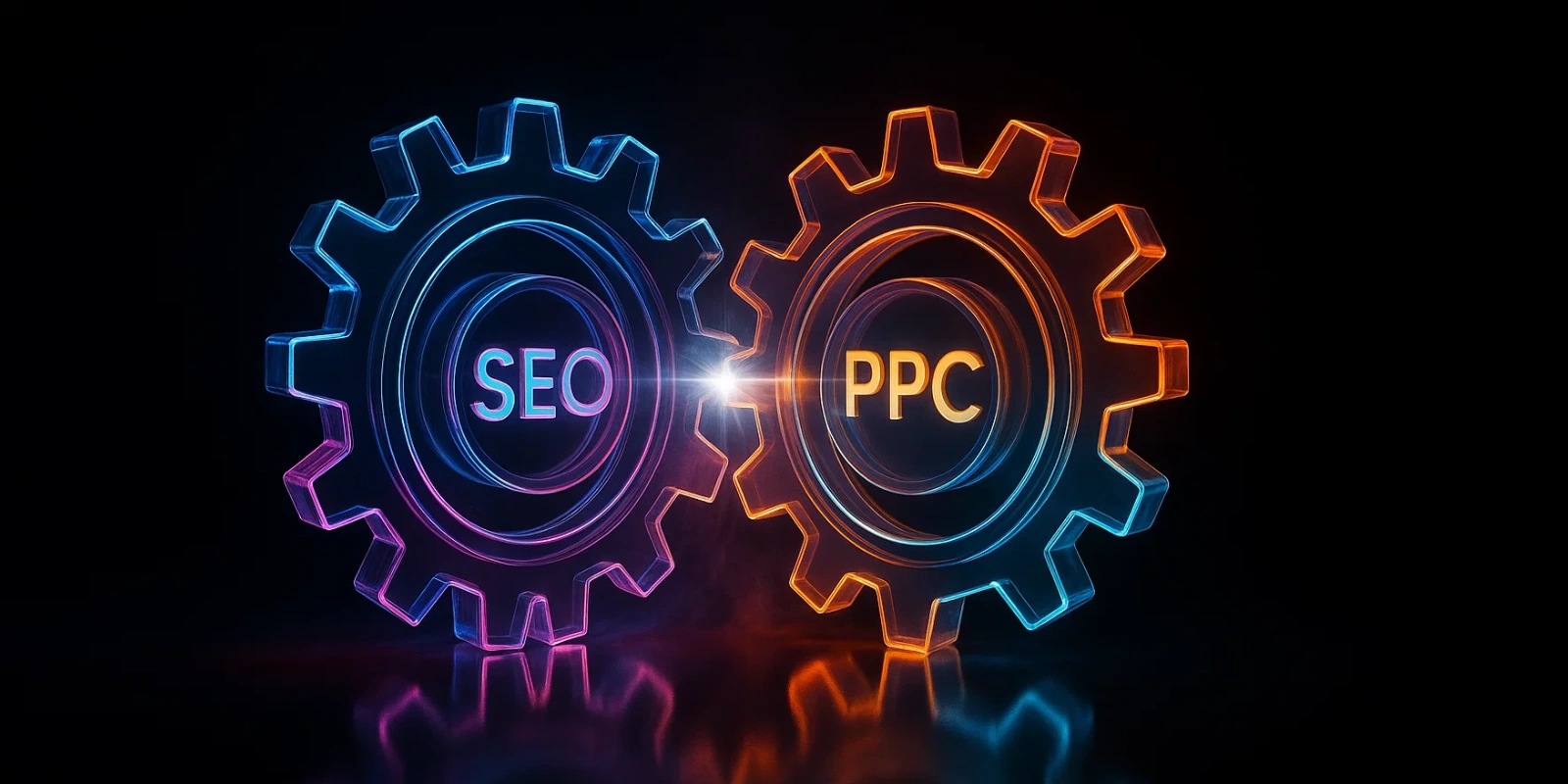
Rather than viewing SEO and PPC as completely separate strategies, consider how they can work hand-in-hand. A combined approach often yields better results than either channel alone. In fact, many businesses find that a combined approach yields a higher overall return on investment than using either channel alone. Here are several ways SEO and paid search can complement each other:
- Immediate + Long-Term Coverage: Use PPC to capture traffic immediately while your SEO efforts are still taking root. For instance, if you publish a new high-quality page that isn’t ranking yet, you can run ads on those keywords to start getting traffic right away. As your SEO improves and that page climbs in organic rankings, you can scale back the ad spend, knowing your organic listing will pick up the clicks.
- Testing and Insights: PPC is a great testing ground for messaging and keywords. If a certain ad headline or offer consistently drives conversions, that’s a strong signal to incorporate those themes into your SEO content and meta titles. You’re essentially using PPC’s quick feedback to inform your long-term SEO strategy about what your audience responds to.
- Covering the Full Funnel: SEO is excellent for drawing in early-stage interest. For example, someone searching for educational information or general advice might find your blog post via organic search. PPC, on the other hand, can target bottom-of-funnel terms like “buy X product” or competitor keywords to capture users who are ready to act. Together, SEO and PPC ensure you have visibility from the research phase all the way to the purchase phase, guiding customers along the journey.
- Strategic Keyword Allocation: Some keywords are very valuable but extremely competitive (and expensive in PPC). An integrated strategy means you can use SEO to try to rank organically for those high-cost keywords, saving ad dollars if you succeed. Meanwhile, use PPC to target other important terms where you’re not on page one yet, so you’re not losing ground. Over time, as SEO starts to pay off for certain terms, you can reallocate that PPC budget to new opportunities. This way, you’re always getting the most out of both channels.
- Maximum Visibility and Credibility: By occupying both an ad slot and an organic listing on the same search results page, you double your visibility. Even if a user skips the ad and clicks your organic result (or vice versa), seeing your brand in both spots reinforces that you’re a key player for that query. It’s a one-two punch: the ad can grab immediate attention, and the organic result underscores that you’re also organically relevant. This combined presence can improve click-through rates and brand recognition.
Future Outlook for SEO and PPC
Looking ahead, both SEO and paid search will continue to evolve. Search engines are getting smarter. Google’s algorithm updates and AI advancements mean that SEO strategies must keep focusing on quality content and genuine user value. Tactics that might have worked years ago (like stuffing keywords or building low-quality links) have fallen by the wayside. Now and in the future, successful SEO will be about understanding user intent and delivering the best answers.
On the paid search side, automation, and machine learning are playing a bigger role. Platforms like Google Ads are offering smart bidding strategies and more sophisticated targeting options powered by AI. This can be a double-edged sword: it makes campaign management easier in some respects, but it’s still important to have human oversight to ensure the automated choices align with your business goals. As privacy regulations increase, we might also see changes in how ads target users (for example, more focus on contextual targeting if personal data becomes less available). Nevertheless, PPC will remain a key way to get guaranteed visibility, though marketers will need to adapt to new tools and rules.
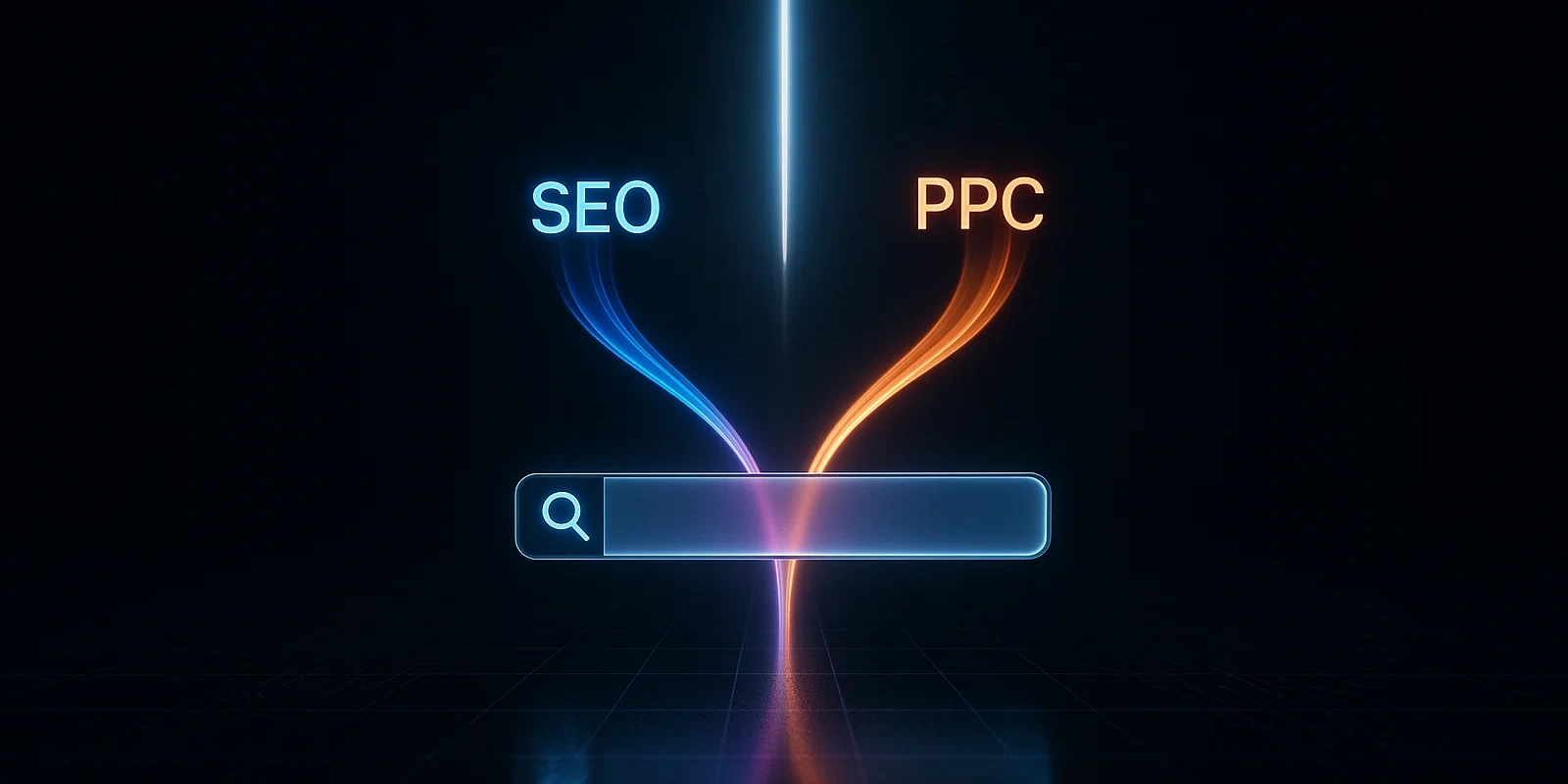
We also expect the line between organic and paid results to continue blurring in some ways. New search features, rich snippets, and even AI-driven answer engines (like voice assistants or chat-based search tools) could change how people find information and how businesses need to optimize. Additionally, voice search and visual search are gaining ground. Optimizing content for the way people ask questions (for voice assistants) and ensuring your images or videos are properly tagged (for visual discovery) are likely to become more important in the coming years. This makes it even more important to have a presence in multiple forms, not relying on just ads or organic content, but ensuring your brand can be discovered through various search formats.
The good news is the core principles remain constant: understand what your audience is looking for and provide it, whether through informative content (SEO) or a timely offer (PPC). By staying informed about trends, for example, keeping an eye on how AI is influencing search results or how advertising platforms are changing, you can adjust your strategy proactively. Via Marketing stays on top of these developments and continually adapts our approach so we can guide our clients through the changing landscape.
In summary, the future will bring new tools and shifts in SEO and PPC, but the fundamental strategy of using them together for both immediate and lasting visibility will remain a winning approach. Keeping a flexible, learning mindset will help you ride the changes and come out ahead of competitors who are slower to adapt.
Conclusion
SEO and paid search are not adversaries but allies. A strong search marketing strategy usually takes advantage of both. SEO is your long-term growth engine. It builds up an enduring presence in search results and steadily grows your organic traffic. PPC is your quick-turn booster. It can drive traffic and leads almost instantly and gives you precise control over who sees your message. When you coordinate SEO and PPC, each one makes the other more effective, covering gaps and reinforcing your overall strategy.
The right balance between SEO and PPC depends on your business’s goals, budget, and timing. If you can, it often makes sense to invest in SEO to secure your future growth while using PPC to capture opportunities in the here and now. Over time, you can adjust the mix: ramp up PPC when you have a special campaign or need a surge, and double down on SEO to solidify your baseline of “free” traffic and authority.
Remember that both channels work best when you treat them as parts of one unified strategy rather than two silos. The insights you gain from one can improve the other, and the coverage you get from both ensures you’re not leaving money on the table. By understanding their differences and using each at the right times, you can maximize your overall results.
At Via Marketing, our goal is to be a collaborative partner in navigating these decisions. We work closely with you to audit your current search performance, identify opportunities, and craft a tailored strategy. Whether it’s strengthening your SEO foundation, launching high-impact PPC campaigns, or doing both in unison, we’re here to help you achieve both short-term results and long-term growth.
In the ever-evolving search landscape, having an expert team by your side can make all the difference. We stay on top of the latest trends and algorithm changes so you can focus on running your business while knowing your online visibility is in good hands. By partnering with us, you’re not choosing SEO or PPC. You’re choosing the right combination of both for sustained success.
Ready to elevate your search marketing strategy? Connect with Via Marketing to explore a tailored approach that combines SEO and PPC for maximum impact on your business’s growth.